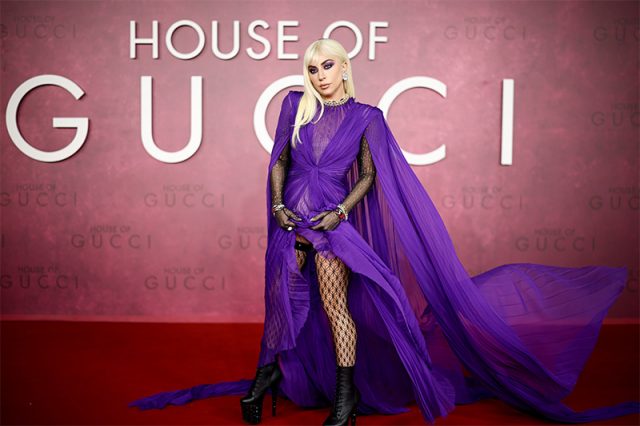
LONDON — Lady Gaga brought her star power to London on Tuesday for the premiere of drama “House of Gucci”, her second major film role for which she said she stayed in character for nine months to play the wife of a murdered heir to the Italian fashion dynasty.
Directed by Ridley Scott, the movie, based on the book of the same name, features an all-star cast, including Adam Driver, Al Pacino, Jared Leto, Salma Hayek and Jeremy Irons, in a retelling of the notorious murder case which shocked Italy and its fashion industry in the 1990s.
Donning an Italian accent, Gaga plays Patrizia Reggiani who married into the Gucci family in 1972 when she wed heir Maurizio Gucci. They divorced in 1994.
A year later Maurizio was shot dead by a hit man outside his Milan office. Reggiani spent 18 years in jail for orchestrating his murder and was released in 2016.
Asked about reports she had stayed in character for 18 months, Gaga said on the red carpet: “I really feel in some ways that my process has been sensationalised into something but I don’t like to lie about my work and my process. So what I will say is this: I’m a romantic when it comes to art.
“I had a romantic relationship with my character, Patrizia. I had a romantic relationship with the script and I dove headfirst into this world because she’s nothing like me… I don’t know where 18 months came from. Nine months, yes, but double that, I don’t know.”
The role follows Gaga’s critically-acclaimed performance in “A Star is Born”, for which she won an Oscar for best original song “Shallow” and a best actress nomination.
Leto plays Paolo Gucci, Maurizio’s cousin, in the movie and is completely unrecognisable.
“Make-up and hair took about six hours,” he told Reuters, adding he had looked to Gucci’s current creative director Alessandro Michele, among others, for inspiration for his accent.
“When you hear the voice, you can hear Alessandro in there too,” he said.
“House of Gucci” begins its cinema rollout on Nov. 24. —Reporting by Hanna Rantala; Writing by Marie-Louise Gumuchian; editing by Jonathan Oatis









